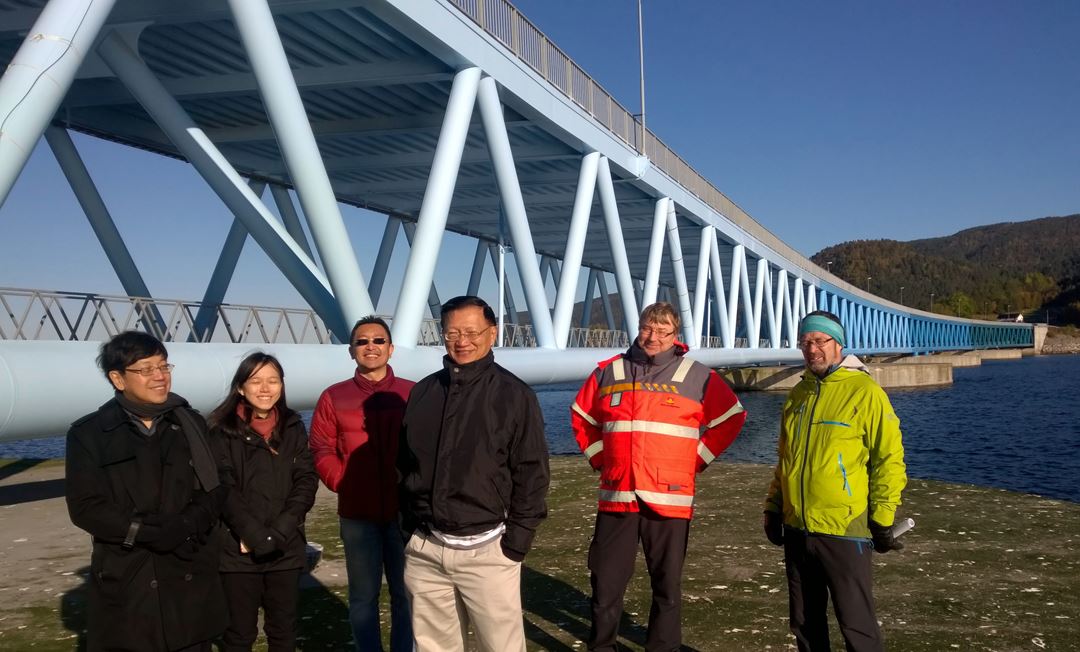In the presence of Singapore's presidential couple and the Norwegian king and queen, no fewer than ten agreements covering research cooperation between Norway and the Asian city-state were recently signed at the Oslo headquarters of the Research Council of Norway.
SINTEF has already been involved for more than a decade in the development of underground engineering projects for various purposes in Singapore, together with Norway's Multiconsult and local company Tritech. The signing ceremony in Oslo included the official launch of a new project with which SINTEF Ocean and SINTEF Building and Infrastructure are already well under way.
Signed by SINTEF President Alexandra Bech Gjørv, the agreement includes a range of research and development projects that will help Singapore to utilise huge floating structures for a wide range of applications, first for energy storage purposes and bridge foundations. These will be followed by entire floating districts and bunkering facilities for seagoing vessels.
Projects worth NOK 40 million
"Singapore needs more area. This is a nation which is already building downwards under dry land and the seabed, and up in the air. Now, Singapore also wants to exploit the sea surface for a variety of construction projects," explains SINTEF Ocean's Øyvind Hellan, who is coordinating the Norwegian side of the project together with Arnstein Watn, a former SINTEF Building and Infrastructure scientist.
The two SINTEF institutes are carrying out the project in collaboration with the National University of Singapore (NUS), and with JTC Corporation, Singapore's state construction company, as client.
Ninety per cent of the project's NOK 40 million budget comes from the host country's research council, with the last 10 per cent from JTC. SINTEF have been awarded more than half of the total.
Floating structures and concrete
"As far as we know, this is the first time that Singapore's research council has allocated such a large amount to be spent abroad. Our client has had positive experience of exploiting the expertise of SINTEF Building and Infrastructure in building underground structures. Now, Singapore wants to exploit SINTEF's expertise in offshore structures and concrete," says Øyvind Hellan over a Skype telephone connection from Singapore.
Since half of the project funding must actually be spent in Singapore, SINTEF have had staff posted there for long periods of time.
Good mooring and durability
So what are the challenges involved when structures that we usually encounter on dry land are turned into floating installations?
"This is a matter of developing structures that satisfy current requirements regarding motions, are capable withstanding wave, current and tidal forces, and are well moored. And they must have a useful life of at least 60 years," summarises Hellan.
Ten-year anniversary of SINTEF Building and Infrastructure projects
SINTEF Building and Infrastructure could well be called a Singapore veteran. In this part of the world, the institute has been a member of the STM (SINTEF-Tritech-Multiconsult) consortium since 2006. The trio has played a central role in the development of Singapore's Jurong Rock Caverns, a huge underground storage facility for petroleum products that was carved out more than 100 metres below the seabed. The facility, the first of its type in South-east Asia, has a storage capacity of more than nine million barrels of oil.
Now, the alliance has just been awarded a new project. In collaboration with the US infrastructure company Black & Veatch, it has been given responsibility for a feasibility study of a comprehensive underground drainage and reservoir for Singapore.



